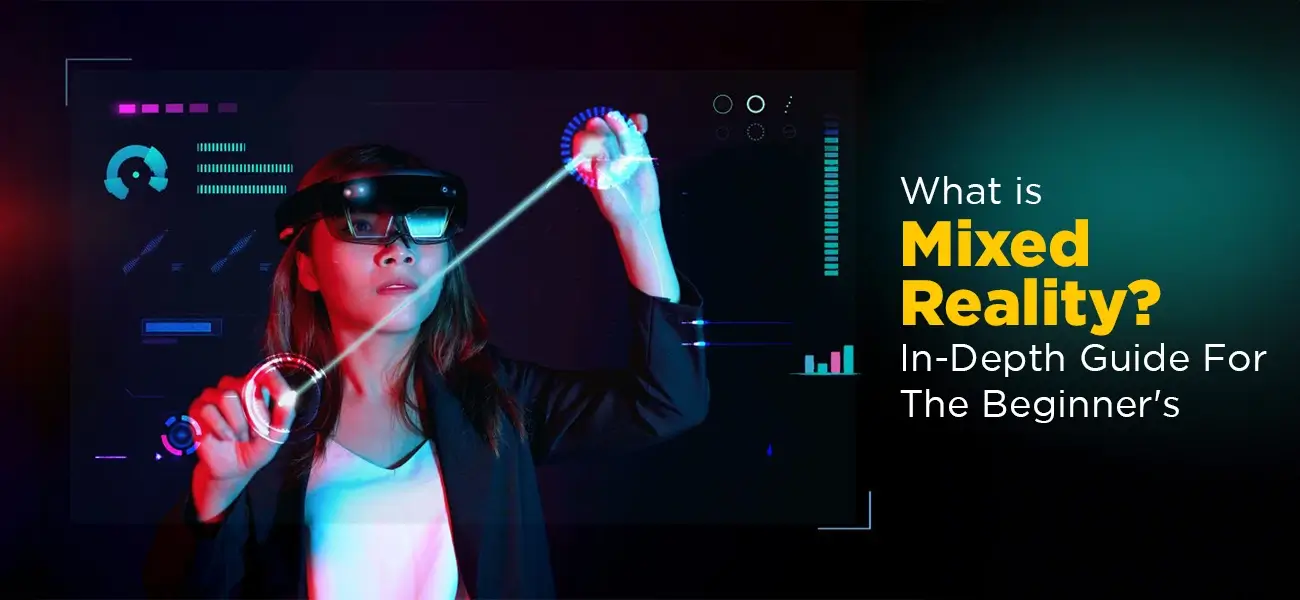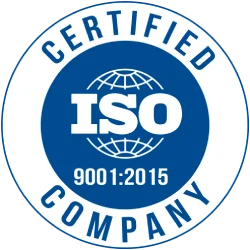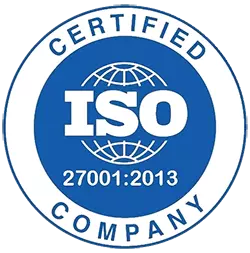An Introduction to Mixed Reality : Blending Real and Virtual Worlds

Mixed reality (MR) is a ground-breaking piece of technology that seamlessly merges the real and virtual worlds. It holds the potential to reshape the way we work, play, and socialize by bringing together tangible and digital elements. Here, we will take a deep dive into the world of mixed reality and explore:
- What is Mixed Reality?
- How do they work?
- MR vs. VR vs. AR: How do they differ from each other?
- Types of devices used for mixed reality
- Applications of mixed reality
What is Mixed Reality?
Mixed reality is defined as immersive technology that combines the physical world with digital world settings. MR encompasses a wide range of technologies that allow users to interact with virtual elements to create a hybrid environment. Another definition mentioned is that real-world and digital content are blended in a hybrid MR environment.
Mixed reality is similar to augmented reality and is known as augmented reality 2.0. It will navigate the data on top of the images smartphones capture. Users can also create and update 3D-enabled content. To access the mixed reality experience, MR headsets called 3D Holograms are used, similar to virtual reality. If you have experienced VR and AR, it's time to experience the extended reality that blends the two technologies.
To simplify, do you remember the last time you cried while watching a movie? And you know that they are not for real. Still, it made you cry anyway. Though you know you are watching fiction, it felt real at that moment. Mixed reality takes this phenomenon one step ahead, making it more intense and interactive.
How do they work?
The technology works by using a headset with cameras and sensors to track the user's information. They can see and interact with the virtual objects that are simulated in the real world. These objects can then respond to stimuli like physical gestures or movements.
The underlying technology frameworks are cloud computing and artificial intelligence (AI) to process data about space. This data is then used to overlay computerized content onto the present reality to create a digitally enhanced experience.
The processed data is stored in three dimensions using the AI sensors, graphical interface unit (GPU), and graphic cards or chips. The outcome is an interactive experience that allows the users to feel as though they are actually in reality.
MR vs. VR vs. AR: How do they differ from each other?
There can be confusion about the terms AR, VR, and MR when the technologies are similar to each other. To understand this technology, you need to know whether what we perceive through our senses comes from the digital or real world.
Let's see how they differ from each other.
| Virtual Reality (VR) | Augmented Reality (AR) | Mixed Reality (MR) |
|---|---|---|
| It is a simulated 3D environment with scenes and objects that allows the users to interact with the virtual elements, making them feel like they are in the digital world. | It is the method of overlaying digital information like visuals, animations, sounds, and other sensory information onto the real world. | Mixed reality is an enhanced version of the interactive experience that blends the digital and physical worlds together to create an immersive platform. |
| It provides a fully immersive experience. | It provides a semi-immersive experience. | It provides an enhanced and interactive experience. |
| It requires a headset. | It does not require a headset, but a specific app. | It requires a headset with specific equipment, like sensors. |
| Example: VR Headsets | Example: Mobile app game Pokemon Go. | Example: Microsoft’s HoloLens |
Types of devices used for mixed reality
Mixed reality uses different types of XR devices apart from headsets. Let's take a closer look at this.
-
Holographic devices
These devices allow the user to create a semi-immersive experience. With virtual holograms, you can create 3D visuals to store, download, and share via edge/ spatial computing. They are used in manufacturing for product assembly, machine operations, and other factory inspections.
Examples of immersive devices: Magic Leap VR, Microsoft HoloLens, and Google Cardboard.
-
Mobile devices
Numerous mobile devices, like tablets, smartphones, and other devices, have implemented toolkits for MR apps. These enable users to superimpose the images on top of the real world. While web based AR applications have proven effective, these utility apps have started implementing MR elements.
-
Head-Up Display (HUD)
A head-up display (HUD) displays the information precisely in front of the viewer, where you need it, and placed directly in the line of sight. A standard HUD consists of three components, namely, a projector, a combiner, and a computer.
Examples of HUD devices: These are frequently employed in the automobile sector. Garmin HUD, Auto lover A8 Car HUD, The Audi Q4 e-tron's HUD, and more
In the beginning, Prototype HUDs were used in the military, and now many manufacturers such as Audi, BMW, and Tata are slowly using HUD devices in their models.
-
Cave Automatic Virtual Environment (CAVE)
CAVE is a 360-degree view of the VR environment where projectors are directed on the walls of the cube-shaped VR room. Complementing the projections with 3D glasses and surround sounds enables the users to feel the perspective intended to simulate the physical world. Engineers widely use this for developing and testing prototype products.
Example: CAVE was implemented in the F-16 aircraft to investigate training subjects while landing.
-
Head-mounted display (HMD)
HMD display device integrated into eyeglasses or mounted on a helmet. It had two small display optics in front of the eyes, where users could see the 3D visuals and move their legs in any direction. It is widely used in medicine, entertainment, aviation, and engineering.
Examples of HMD devices: Meta Quest 2 or Samsung Gear VR
Applications of mixed reality
Mixed reality has several applications across various industries, including:
- Gaming and entertainment: MR is used in the gaming sector to create a highly immersive and interactive gaming experience. With this, players can fight enemies, grab weapons, or buy virtual elements—all taking place in their living space.
- Healthcare: MR can be beneficial to create 3D interactive models of organs using the holographic effect to understand the functioning of the human body. This technology is highly beneficial for medical professionals and students planning surgeries.
- Education and training: This innovation provides students with an immersive and interactive learning experience. The virtual aids help the learners understand complex concepts quickly. It expands the training method, and the employees can learn the needed topics without losing much time.
- Manufacturing: MR is used in manufacturing to provide workers and other employees with real-time information and instructions, thus improving production efficiency.
- Retail and e-Commerce: It allows the customers to view the products with a try-on experience before they buy them. Brick-and-mortar stores use 3D configurators in e-Commerce to provide virtual product demonstrations to enhance online shopping.
Final Thoughts!
In conclusion, Mixed Reality or Hybrid Reality is the next step in the evolution of the internet.
As we enter the new world of technology, MR is the emerging innovation that has marked an inevitable change across many sectors. It highlights the natural world with the digital environment's eye-catching visuals, which makes it a perfect tool for business facets.
With its promise of more intense, immersive, shared, connected, and interactive experiences, Mixed Reality will become massively popular in the coming years. It's sure to have a significant impact on our modern lives. You will see how people are utilizing MR to play, work, socialize, and communicate their ideas seamlessly. As MR technology continues to advance, its applications are likely to expand even further, offering new and innovative ways to interact with the world around us.
Through this article, we hope you have a fair idea of what mixed reality is all about, how it differs from the other two technologies, VR and MR, and how it will impact the future. Now, if you want high-quality 3D models developed by professionals. Contact professional 3D modeling firms that provides best 3D modeling solutions for AR.
Step into the future of the Mixed Reality world and begin thinking beyond the universe - the metaverse!
Contact Us

